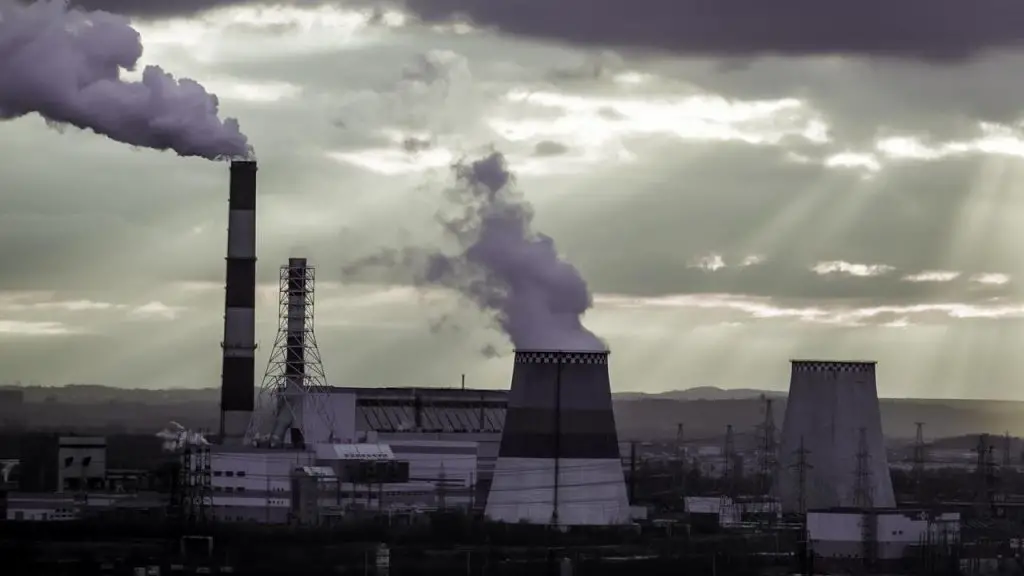When we think of polluted air, the first thing that usually comes to mind is smog. Smog is the result of certain airborne pollutants mixing with moisture in the air and reducing visibility. Smog is commonly associated with acid rain and its acidic properties. As a result, many people believe that carbon dioxide causes acid rain as well as global warming.
Is there any truth to this? Are humans responsible for causing acid rain? What exactly is it? Read on to learn more about the causes and effects of acid rain, its link to global warming and CO2, and how you can help protect the environment for future generations.

What Is Acid Rain?
Acid rain is precipitation (water falling from clouds) that is mildly acidic, having a pH that is lower than 7.0. The term “acid rain” is actually a bit of a misnomer as it doesn’t really rain, and it isn’t really acid. It’s just a way of describing the chemical reactions that happen when certain chemicals mix with water.
The chemical reactions that produce acid rain occur when there is an overabundance of certain chemical compounds in the atmosphere.
These compounds, primarily sulfur dioxide and nitrogen oxides, react with moisture in the air to produce the mild acidity of acid rain. Acid rain is not a single type of chemical reaction. There are actually several different chemical reactions that can produce acid rain.
Each reaction produces a slightly different type of acid, with slightly different chemical properties. The most common types of acids produced by these reactions are sulfuric, nitric, and hydrochloric acids.
How Does Carbon Dioxide Cause Acid Rain?
As we just explained, the chemical reactions that produce acid rain occur when certain chemicals mix with water. So, if carbon dioxide is one of the main chemicals responsible for global warming, why wouldn’t it also cause acid rain?
Well, as it turns out, carbon dioxide is a weak acid, and it does not react with water to produce an acidic product. But, many of the other gases that are released as a byproduct of burning fossil fuels and other human activities do react with water to produce acid rain.
Some of these gases include sulfur dioxide and nitrogen oxides. The sulfur dioxide (SO2) and nitrogen oxides (NOX) released from these sources react with water to form sulfuric acid and nitric acid, respectively. Once the acids fall to the ground as precipitation (rain, sleet, snow, etc.), they damage the environment and cause acidification in the soil and water.
Why Isn’t CO2 Responsible for Acid Rain?
Just because carbon dioxide doesn’t react with water to produce an acidic product doesn’t mean that it isn’t a dangerous pollutant. CO2 is one of the main causes behind global warming, which can be just as harmful to the environment as acid rain. Carbon dioxide is an important component of the earth’s atmosphere.
The earth needs CO2 because it acts as a greenhouse gas, trapping heat and keeping the planet warm. But, there is too much CO2 in the atmosphere right now, and it’s preventing heat from escaping. As a result, the earth is getting warmer and warmer.
Global Warming and CO2: What’s the Connection?
As we’ve already established, carbon dioxide is one of the main gases responsible for global warming. So, where does it come from? The majority of CO2 released into the atmosphere today comes from burning fossil fuels, like coal, oil, and natural gas. When people burn these fossil fuels for power, they produce CO2 as a byproduct.
Unfortunately, burning fossil fuels is a major contributor to the greenhouse effect, which traps heat in the earth’s atmosphere and causes global warming. As a result, the earth is getting warmer, and we are seeing impacts like rising sea levels and an increase in extreme weather.
Protecting Our Environment: What You Can Do
There is a lot we can do to protect the environment and reduce the amount of CO2 in our atmosphere. First and foremost, you can switch to clean energy, like solar and wind power. Clean energy doesn’t produce as much CO2 as burning fossil fuels, so it can help reduce global warming. You can also reduce your carbon footprint by carpooling, walking more, and riding a bike whenever you can.
You can also plant trees to help the environment. Trees absorb CO2 from the atmosphere and release oxygen, which is necessary for life on earth. You can also reduce your food waste and use less water. These are all ways you can help protect the environment and reduce the amount of CO2 in the atmosphere.
Conclusion
When we consider that carbon dioxide is one of the main causes of global warming, it’s easy to see why many people mistakenly believe that it’s also responsible for acid rain. As it turns out, CO2 is a weak acid that does not react with water to produce an acidic product. Instead, other gases, like sulfur dioxide and nitrogen oxides, react with water to form sulfuric acid and nitric acid, respectively.
These two types of acids are what cause acid rain. As we can see, although carbon dioxide doesn’t cause acid rain, it is nonetheless a dangerous pollutant that is contributing to global warming. Thankfully, there are many things we can do to reduce our carbon footprint and protect the environment.
Additional Contents

